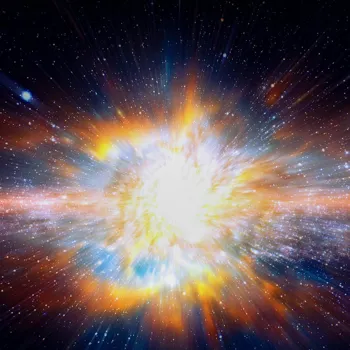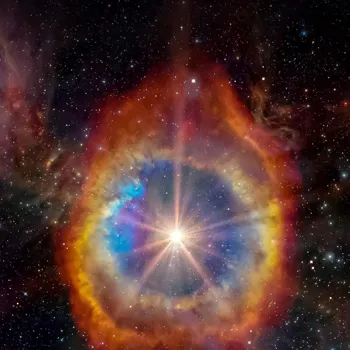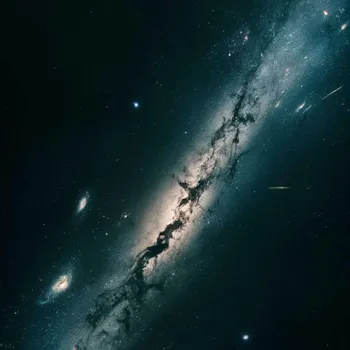Unveiling Cosmic Rays: Probes into the Universe's Most Energetic Secrets. Curious? Discover the mystery beyond our galaxy!
For generations, scientists have been captivated by cosmic rays – high-energy particles
constantly bombarding Earth from outer space. These aren't rays in the traditional sense like light, but rather subatomic particles whizzing through the cosmos at near-light speed.

Understanding these particles provides a peek into the most energetic phenomena occurring in the universe, far beyond our solar system. So, what exactly are these cosmic rays, and where do they originate? Let's delve into the fascinating science behind these messengers from the great beyond.
Discovery of cosmic rays in 20th century, Hess' airborne experiment, high-energy particles from space
Cosmic rays were first discovered in the early 20th century by scientists trying to understand why electroscopes, devices used to detect electric charge, would discharge even when shielded from all known sources of radiation on Earth.
Austrian physicist Victor Hess ingeniously took the experiment airborne, ascending in a hot air balloon and discovering that the radiation intensity increased with altitude. This led him to conclude that the radiation was coming from space, earning him the Nobel Prize in Physics in 1936.
Since then, extensive research has been conducted to understand their nature, composition, and origins.
These studies show that cosmic rays primarily consist of protons (about 90%), helium nuclei (alpha particles, about 9%), and a small fraction of heavier nuclei, electrons, and antimatter particles like positrons.
These particles are incredibly energetic, with energies ranging from a few million electron volts (MeV) to incredibly high energies exceeding 10^20 electron volts (EeV) – far, far beyond anything that can be achieved in human-made particle accelerators.
Cosmic rays' origin: lower-energy from galaxy, highest-energy unknown, likely sources: supernova remnants, AGN, GRBs
The origin of cosmic rays remains a topic of active research. While lower-energy cosmic rays are believed to originate from within our galaxy, the source of the highest-energy cosmic rays is still unknown and a major astrophysical puzzle.

The most likely candidates for galactic cosmic ray sources are supernova remnants. Supernovae, the explosive deaths of massive stars, generate powerful shockwaves that can accelerate particles to tremendous energies.
These particles then spiral through the galaxy's magnetic fields, eventually reaching Earth. However, this explanation doesn't fully account for the highest-energy cosmic rays.
These ultra-high-energy cosmic rays (UHECRs) possess energies so immense that they should be affected by interactions with the cosmic microwave background radiation, limiting their travel distance.
This implies that their sources must be relatively nearby, within a few hundred million light-years, which includes the local supercluster of galaxies.
Potential sources of UHECRs include active galactic nuclei (AGN), which are supermassive black holes at the centers of galaxies that spew out enormous jets of energetic particles, and gamma-ray bursts (GRBs), which are among the most powerful explosions in the universe.
Studying cosmic rays using ground-based and space detectors
Detecting and studying cosmic rays is a challenging task, as they interact with Earth's atmosphere, producing a shower of secondary particles.

Scientists use various techniques to detect these particles, including ground-based detectors like the Pierre Auger Observatory in Argentina, which covers an area of 3,000 square kilometers and detects UHECRs by measuring the particles produced when they interact with the atmosphere.
Another approach involves using balloon-borne and satellite-based detectors, such as the Alpha Magnetic Spectrometer (AMS) on the International Space Station, to directly measure the composition and energy of cosmic rays before they interact with the atmosphere.
These detectors provide valuable information about the nature and origin of cosmic rays.
The data gathered from these experiments help scientists build models of particle acceleration in astrophysical environments and understand the processes that govern the most energetic phenomena in the universe.
Study of cosmic rays reveals universe's secrets, impacts space exploration
The study of cosmic rays has significant implications for our understanding of the universe.
By analyzing the composition and energy spectra of cosmic rays, scientists can glean insights into the processes that occur in extreme environments like supernovae, active galactic nuclei, and gamma-ray bursts. Cosmic rays also play a role in the formation of elements in the universe.
When cosmic rays interact with interstellar gas and dust, they can produce lighter elements like lithium, beryllium, and boron through a process called spallation. Furthermore, cosmic rays can influence the chemistry of interstellar space and potentially affect the formation of stars and planets.
Closer to home, cosmic rays contribute to the radiation environment in the atmosphere, which can affect aircraft electronics and pose a radiation hazard to astronauts during space missions.
Understanding the effects of cosmic rays is therefore crucial for space exploration and the development of radiation shielding technologies.
Indian scientists active in cosmic ray research for global understanding
In Indian science, there’s growing interest and participation in cosmic ray research. Several institutions are actively involved in building detectors, analyzing data, and contributing to international collaborations.
The GRAPES-3 experiment, located in Ooty, is a large area muon telescope that studies cosmic rays and their interactions with the atmosphere.
Indian scientists are also involved in the Pierre Auger Observatory and the AMS experiment, contributing to the global effort to unravel the mysteries of cosmic rays.
The challenges are significant, requiring sophisticated equipment and expertise, but the potential rewards – a deeper understanding of the universe – are immense.
As technology advances, we can expect even more exciting discoveries in the field of cosmic ray research, shedding light on the most extreme and energetic environments in the cosmos and the fundamental laws that govern them.
AI Generated Content. Glance/InMobi shall have no liability for the content











